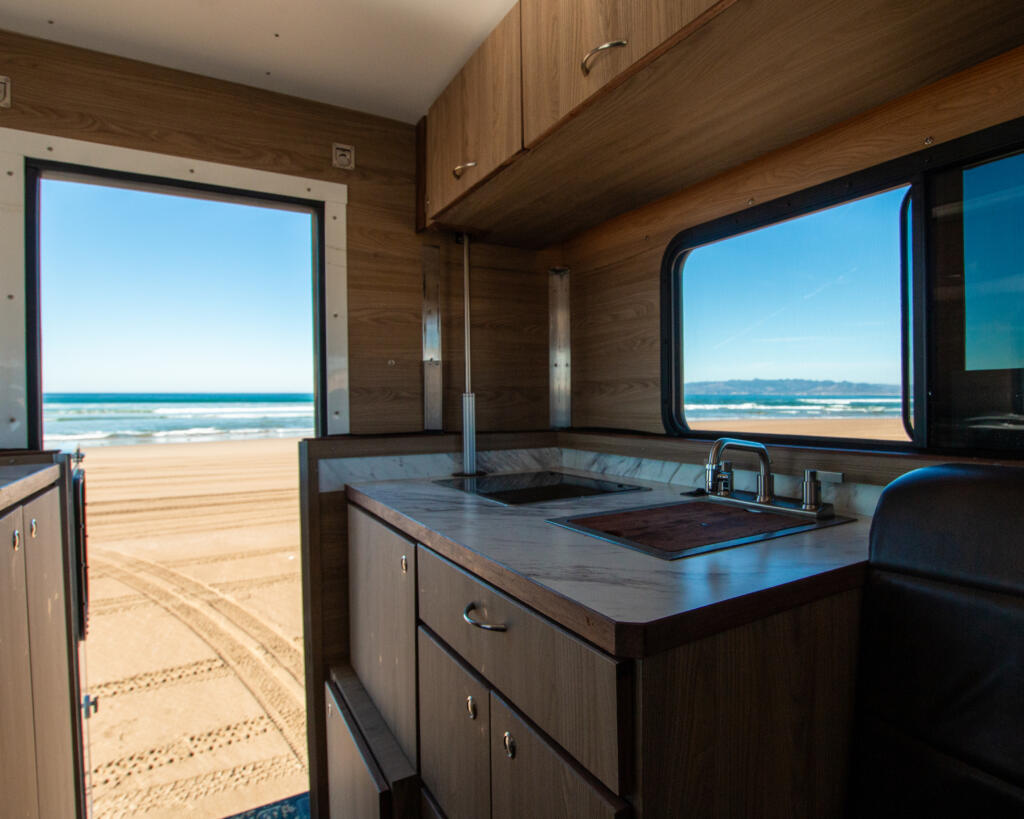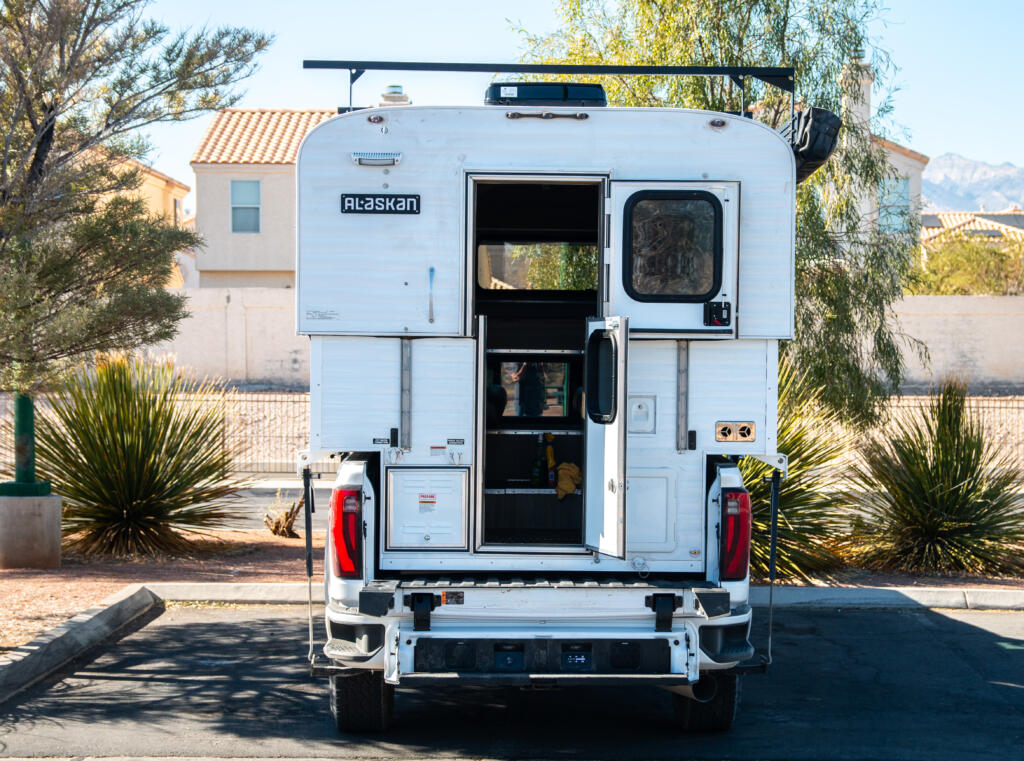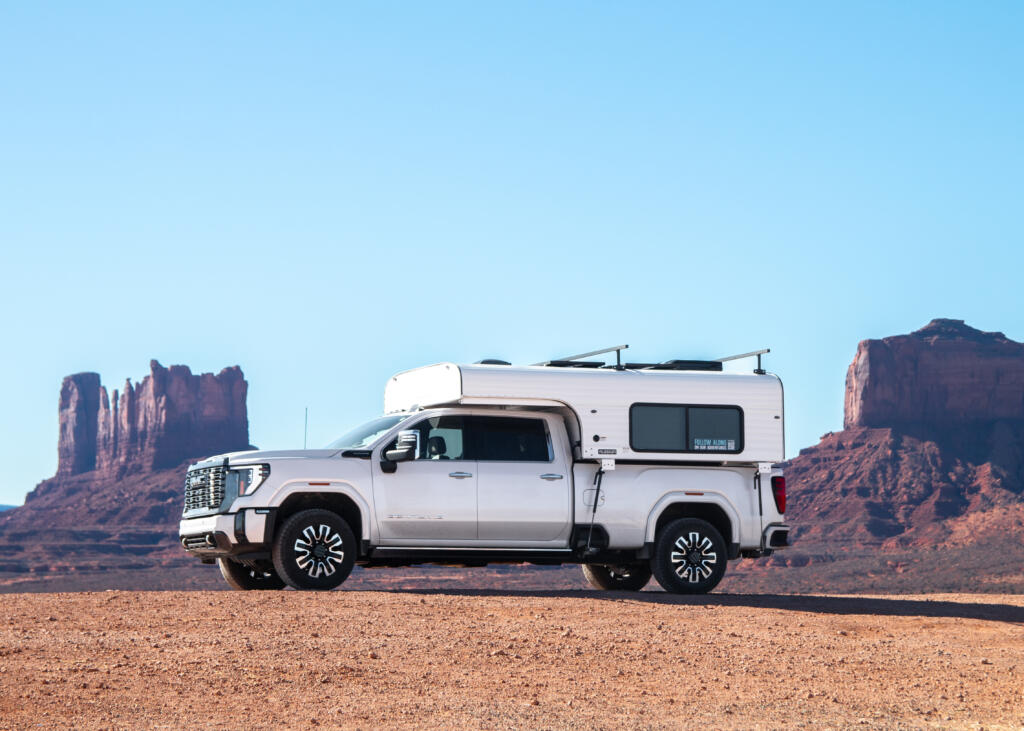Building the Ultimate Emergency Road Trip Kit
Because “It’ll Be Fine” Isn’t a Plan
The open road is unpredictable. One minute, you’re cruising along with the windows down and the perfect playlist; the next, you’re pulled over on a desolate highway with a flat tire, a dead battery, or worse—zero cell service. Whether you’re setting out on a cross-country expedition in your Alaskan Camper or just heading off the beaten path for a weekend getaway, a well-prepared emergency kit is the difference between a minor inconvenience and a full-blown survival scenario.
Building a road trip emergency kit isn’t just about stuffing a few Band-Aids and a flashlight into your glove compartment. It’s about anticipating problems before they happen and having the right tools, supplies, and knowledge to handle whatever comes your way. So, let’s go beyond the basics and build a kit that actually prepares you for the unexpected.

How to Store Your Emergency Gear
Before we get into what to pack, let’s talk about how to store it. Your emergency gear is only useful if you can actually find it when you need it.
A large, heavy-duty plastic bin with a tight-sealing lid is a solid choice for keeping supplies organized, dry, and easily accessible. Look for something in the 20–30 gallon range so you have enough space without taking up your entire truck bed. For smaller, frequently used items, a duffle bag or backpack is a good secondary option—especially if you need to grab supplies in a hurry.
Other storage ideas:
- Seat-back organizers – Nice for keeping flashlights, gloves, and maps within arm’s reach.
- Truck bed storage drawers – Great for stashing tools and recovery gear in an easy-access compartment.
- Under-seat storage – A good spot for first-aid kits, extra water, and emergency food.
🔹 Pro Tip: Keep essential items (like first aid, flashlights, and tools) somewhere easy to reach. The last thing you want is to be digging through bins in the dark during a crisis.
Water & Food: Essential Supplies for Survival
Getting stuck on the side of the road is frustrating. Getting stuck on the side of the road hungry and dehydrated is miserable. Whether you’re stranded due to a mechanical issue, waiting out bad weather, or just miles away from the nearest gas station, having enough water and food is non-negotiable. When you’re tired, hungry, or battling extreme temperatures, your decision-making can take a hit. Staying fueled and hydrated isn’t just about comfort—it’s about staying sharp and staying safe.
Water
The general rule is one gallon per person per day, but if you’re in extreme heat, at high altitude, or doing strenuous activity, double that. Don’t just assume you’ll have access to clean water—carry more than you think you’ll need.
- BPA-free water jugs – Durable, easy to fill, and won’t leak toxic chemicals into your supply.
- Collapsible water containers – Save space when empty but provide emergency storage.
- Water purification tablets or filters – A LifeStraw, Sawyer Mini, or iodine tablets can be lifesavers if you need to source water from a lake or river.
- Insulated water bottles – Keep water cool in the summer and prevent freezing in the winter.
Food
Emergency food should be high-calorie, long-lasting, and require minimal preparation. Ideally, you want foods that won’t spoil, can withstand fluctuating temperatures, and provide sustained energy.
- Protein bars & trail mix – Compact, nutrient-dense, and require zero prep.
- Canned meats & beans – More substantial but require a can opener.
- Peanut butter & honey – High-calorie, shelf-stable, and packed with energy.
- Instant coffee or tea – Because caffeine withdrawal is real, and a warm drink boosts morale.
- Freeze-dried meals – Just add hot water for a full meal. Great for extended trips.
🔹 Pro Tip: Store food in an airtight, rodent-proof container to keep it fresh and prevent unwanted critters from getting into your supplies.

First Aid: Be Ready for Any Emergency
A solid first-aid kit isn’t just for minor scrapes—it could save your life. Whether you’re hours from help or just need to patch up a nasty blister, being prepared means taking care of small issues before they become big problems.
A store-bought first-aid kit is a good start, but most don’t come with everything you’ll need for real emergencies. Build your own or supplement a pre-made kit with essential supplies:
- Bandages & gauze – For cuts, blisters, and wound dressing.
- Antiseptic wipes & antibiotic ointment – Infection prevention is key.
- Pain relievers & allergy meds – Ibuprofen, aspirin, antihistamines.
- Tweezers & medical scissors – For splinters, ticks, or cutting gauze.
- Compression wrap & splint – Sprains and fractures happen—be prepared.
- Burn cream & cold packs – Important if you’re cooking over a fire or working with hot vehicle parts.
- Emergency medications – Carry extra doses of any prescriptions you rely on.
🔹 Pro Tip: Keep a first-aid manual in your kit. In a real emergency, a step-by-step guide can make all the difference.
Tools & Recovery Gear: Fix Issues Before They Strand You
When your truck won’t start, your tire blows out, or your rig gets stuck in the mud, a roadside toolkit can mean the difference between waiting hours for help or handling it yourself. Off-grid or in remote areas? You’re your own first responder.
- Multi-tool – Covers a lot of fixes in a compact package.
- Jumper cables OR a portable jump starter – A dead battery can shut down your trip fast.
- Tire repair kit & spare tire – Because roadside assistance isn’t always an option.
- Duct tape & zip ties – Quick fixes for hoses, broken latches, and gear straps.
- Tow strap or recovery rope – For self-recovery or getting a tow from a buddy.
- Folding shovel – Dig out of snow, sand, or mud.
- Work gloves – Keep your hands protected from rough repairs.
- Portable air compressor – If you need to reinflate a tire after patching it.
- Can of Fix-a-Flat – For quick tire repairs to get you moving again.
🔹 Pro Tip: Even if you have AAA, service doesn’t always reach remote areas. Learn how to change a tire, check fluid levels, and troubleshoot common issues before you hit the road.

Visibility & Communication: Stay Safe and Get Help Faster
A breakdown is bad. A breakdown when no one can see you? Way worse. If you’re stranded on a dark road or in heavy fog, you want other drivers to see you long before they’re close.
- Flashlights & headlamps – Hands-free LED models last longer.
- Reflective triangles & road flares – Essential for nighttime safety.
- Whistle – Carry one in case you need to signal for help.
- Portable power bank – Keeps your phone alive when you need it most.
- Hand-crank or battery-powered radio – If you lose service, this keeps you connected to weather updates.
- Satellite communicator (Garmin inReach or similar) – If you’re traveling off-grid, this could be your lifeline.
🔹 Pro Tip: Always tell someone where you’re going and your estimated arrival time. If something goes wrong, at least someone knows to look for you.
Shelter & Warmth: Be Prepared for Any Weather
Weather can turn fast. You don’t have to be in the Arctic for cold exposure to be a real danger—even the desert drops below freezing at night. Whether you’re waiting out a storm or caught in an unexpected overnight situation, staying warm and dry is priority #1.
- Emergency blankets – Lightweight, compact, and surprisingly warm.
- Sleeping bag – If you’re in colder climates, get one rated for low temps.
- Rain ponchos – Because wet + cold = bad time.
- Hand warmers – Small, lightweight, and a lifesaver in freezing conditions.
- Extra layers – A spare fleece or thermal clothing goes a long way.
🔹 Pro Tip: If you’re forced to sleep in your vehicle during a winter emergency, crack a window slightly to prevent condensation buildup—this helps keep the air dry and prevents frost from forming inside your windshield.
Navigation & The Backup Plan
GPS is great—until your phone dies, your signal drops, or your device glitches out. Knowing where you are (and where you’re going) without relying on technology is crucial.
- Physical maps – Yes, paper ones still matter. Get detailed maps of the areas you’ll be traveling through.
- Compass – Even a basic one is better than nothing.
- Notebook & pencil – Jot down directions, fuel stops, or emergency contacts.
- Satellite GPS device – For true off-grid travel, invest in a Garmin inReach or SPOT GPS device.
🔹 Pro Tip: In remote areas, download offline maps on your phone before your trip so you have a digital backup even if you lose service.

Plan for the Worst, Enjoy the Best
No one wants to think about worst-case scenarios. But when you’re prepared, small problems stay small, and you get to focus on the adventure, not the setbacks. Take the time to build your emergency kit, update it seasonally, and keep it accessible.
Got a killer emergency setup? We’d love to see how Alaskan Camper owners pack their gear. Send us a photo and a breakdown of your setup to [email protected]! Stay safe, stay prepared, and may your biggest road trip emergency be running out of coffee.
